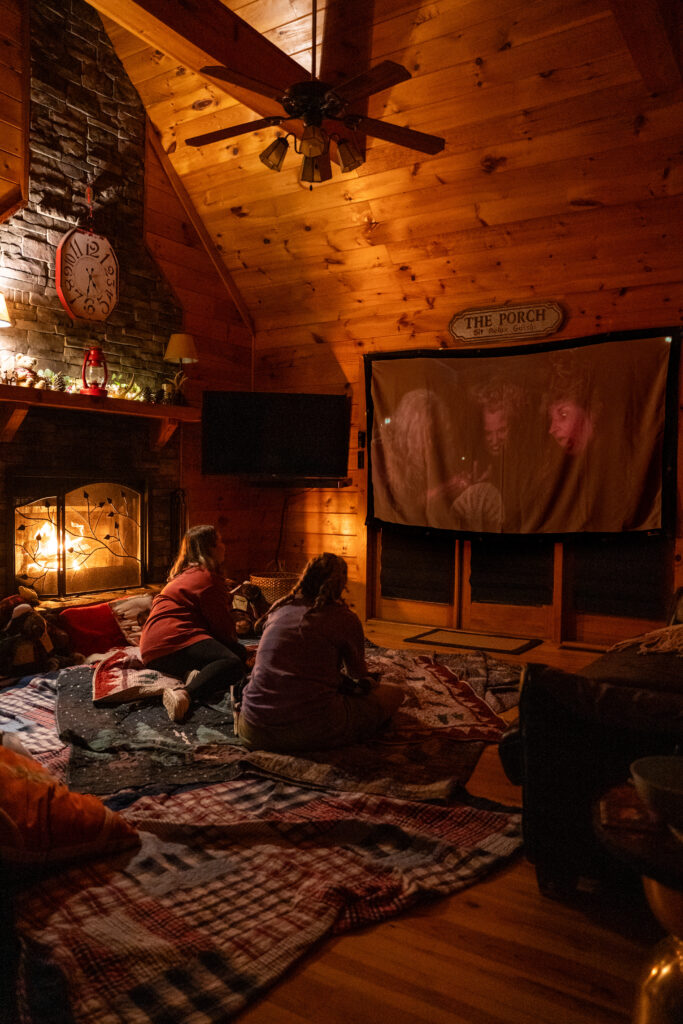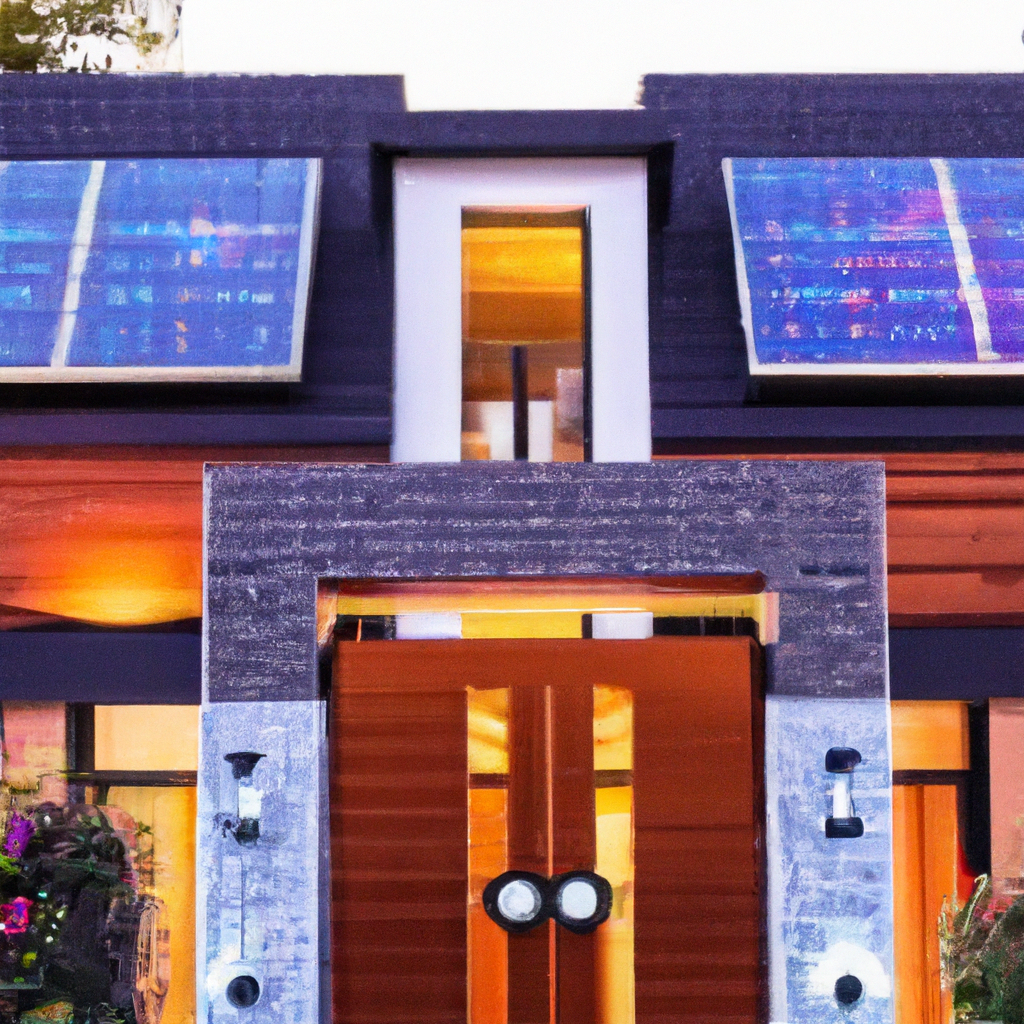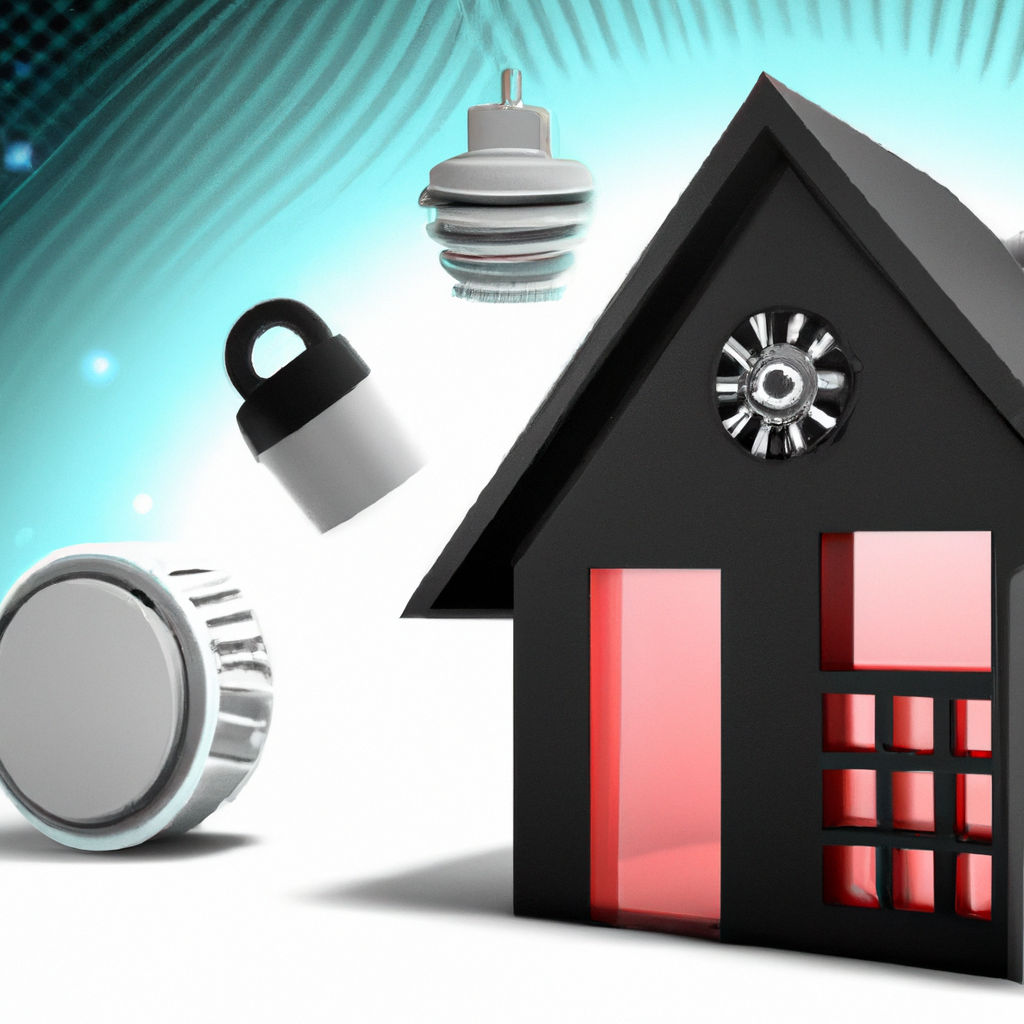Imagine having the ability to control your home with just a few taps on your smartphone or a simple voice command. Smart home technology has revolutionized the way we live, making our houses more convenient and efficient than ever before. But what if you don’t want to hire professionals to install these high-tech gadgets? Luckily, there are plenty of do-it-yourself (DIY) options available for those who are eager to explore the world of smart home technology on their own terms. In this article, we will take a closer look at some of the most popular DIY options out there, giving you the confidence to create your very own smart home without breaking the bank. So, get ready to embark on an exciting journey as we delve into the endless possibilities of DIY smart home technology!
Exploring DIY Options for Smart Home Technology
Are there DIY options for individuals interested in smart home technology? Yes, there certainly are! DIY smart home technology allows you to turn your regular home into a smart home without the need for professional installation or expertise. With a wide range of DIY options available, you can enjoy the convenience, energy efficiency, and enhanced security that smart home technology offers. In this article, we will explore the benefits and challenges of DIY smart home technology, as well as specific areas where you can incorporate it into your home.
Benefits of DIY Smart Home Technology
One of the main advantages of DIY smart home technology is the cost savings it offers. By eliminating the need for professional installation, you can significantly reduce the upfront expenses associated with smart home upgrades. Additionally, DIY options often come with flexible customization and scalability, allowing you to expand or modify your smart home system according to your specific needs.
Another benefit is the empowerment and control it gives you over your home. With DIY smart home technology, you have the freedom to choose which devices to install, how to configure them, and when to make changes or upgrades. This level of control allows you to personalize your smart home experience and make adjustments as you see fit.
Challenges of DIY Smart Home Technology
While the benefits of DIY smart home technology are compelling, it is important to consider the challenges that may arise. One significant challenge is the learning curve associated with the installation and setup process. DIY smart home technology often requires a certain level of technical knowledge and troubleshooting skills. However, with the right resources and guides, this challenge can be overcome by those willing to learn.
Another challenge is the complexity of integrating different devices and systems. DIY smart home technology often involves using various devices and platforms from different manufacturers. Ensuring compatibility and establishing seamless communication between these components can sometimes be a challenging task. However, as the market continues to evolve, more user-friendly integration options are becoming available.
Home Automation Systems
Understanding Home Automation Systems
Home automation systems form the backbone of a smart home. They provide the central control and management platform for all the smart devices and appliances in your home. These systems allow you to automate routine tasks, control devices remotely, and create customized scenarios for different situations.
Popular DIY Home Automation Systems
When it comes to DIY home automation systems, there are several popular options to choose from. Some of the most well-known and widely used systems include SmartThings, Wink, and Hubitat. These systems offer a range of features and compatibility with various devices, making them suitable for different types of smart home setups.
Installation and Setup
Installing a DIY home automation system involves connecting the hub or controller to your home’s internet router and then pairing individual devices with the system. The setup process typically involves following detailed instructions provided by the manufacturer or using mobile apps to initialize and configure the devices.
Cost Considerations
The cost of DIY home automation systems varies depending on the specific system and the number of devices you plan to integrate. The initial cost typically includes the purchase of a hub or controller, which can range from $50 to $200. Additional expenses may include buying compatible devices such as smart switches, sensors, or thermostats. However, compared to professional installation, DIY systems can still offer significant cost savings.

Smart Lighting
Benefits of Smart Lighting
Smart lighting provides numerous benefits for homeowners. One of the primary advantages is the ability to customize and control your lighting from anywhere using your smartphone or voice commands. Whether you want to dim the lights, change colors, or create lighting schedules, smart lighting solutions offer flexibility and convenience.
Additionally, smart lighting can enhance energy efficiency, as you can easily turn off lights remotely or set them to automatically adjust based on occupancy or daylight. This can result in lower energy bills and contribute to a greener lifestyle.
DIY Smart Lighting Options
There are several DIY options to choose from when it comes to smart lighting. Philips Hue is a popular choice, offering a wide range of bulbs, light strips, and fixtures that can be controlled via Bluetooth or a hub. Other options include LIFX, TP-Link, and Wyze, each with their unique features and compatibility with different home automation systems.
Installation and Configuration
Installing smart lighting typically involves replacing existing light bulbs with smart bulbs or installing smart switches or dimmers. The setup process may differ slightly depending on the brand and type of smart lighting you choose. Some systems may require syncing with a hub or downloading a mobile app for configuration purposes.
Integration with Home Automation Systems
Smart lighting can be seamlessly integrated with your home automation system, allowing you to include lighting control in your customized scenarios. With integration, you can create automation routines that adjust lighting based on certain triggers, such as time of day, occupancy, or even weather conditions. This enhances the overall smart home experience and further improves energy efficiency.
Smart Thermostats
Advantages of Smart Thermostats
Smart thermostats offer numerous advantages for homeowners, including increased energy efficiency, cost savings, and improved comfort. With smart thermostats, you can easily schedule temperature changes, adjust settings remotely, and receive insights into your energy usage. These features allow you to optimize your heating and cooling system, resulting in lower energy bills and reduced environmental impact.
DIY Smart Thermostat Choices
When it comes to DIY smart thermostats, several popular options are available. Nest Learning Thermostat, ecobee SmartThermostat, and Honeywell Lyric T5 Wi-Fi Thermostat are among the top choices. These thermostats offer features such as learning capabilities, remote control, and integration with voice assistants.
Installation and Programming
Installing a DIY smart thermostat typically involves replacing your existing thermostat with the smart thermostat. The installation process may vary depending on your HVAC system and the brand of thermostat you choose. While installation can be done by most homeowners, it is essential to follow the manufacturer’s instructions carefully or seek professional assistance if needed.
Programming the smart thermostat involves setting up temperature schedules, creating energy-saving modes, and adjusting preferences. Most smart thermostats come with user-friendly interfaces and mobile apps that make programming intuitive and straightforward.
Compatibility with Home Automation Systems
Smart thermostats are designed to integrate with home automation systems seamlessly. This allows you to control your thermostat alongside other smart devices and create comprehensive automation routines. By syncing your smart thermostat with your home automation system, you can establish temperature adjustments based on specific triggers, such as time of day, occupancy, or even the opening of windows or doors. This integration further enhances energy efficiency and adds convenience to your smart home setup.

Home Security and Surveillance
Importance of Home Security Systems
Home security is a paramount concern for homeowners, and incorporating smart home technology can provide an added layer of protection. Smart security systems offer benefits such as real-time monitoring, remote access, and customized alerts, keeping your home and loved ones safe and secure.
DIY Home Security and Surveillance Options
DIY home security and surveillance options are becoming increasingly popular, providing homeowners with affordable and customizable solutions. Companies like Ring and Arlo offer easy-to-install devices that include doorbell cameras, security cameras, and motion sensors. Additionally, DIY smart door/window sensors, smart locks, and smart alarms can be integrated into your system to provide enhanced security.
Installation and Monitoring
Installing DIY home security and surveillance systems typically involves mounting cameras, sensors, and alarms in strategic locations around your property. Most devices use wireless connectivity, making installation straightforward and reducing the need for extensive wiring.
Monitoring your DIY security system can be done through mobile apps or web interfaces provided by the manufacturer. These apps allow you to receive real-time notifications, view live camera feeds, and control various security settings remotely. Some companies also offer optional professional monitoring services that can be added if desired.
Integration with Smart Home Technology
Integrating your DIY home security and surveillance system with your existing smart home technology can provide added control and convenience. By connecting your security devices to your home automation system, you can create automation routines that arm or disarm your security system based on specific triggers or events. This integration ensures that your security system works harmoniously with the rest of your smart home setup.
Smart Locks
Benefits of Smart Locks
Smart locks offer numerous benefits, enhancing both convenience and security in your home. With smart locks, you no longer need to worry about carrying keys or fumbling with locks. Instead, you can simply use your smartphone, a keypad, or even your voice to lock and unlock your doors.
Smart locks also allow you to grant access to family members, guests, or service providers remotely. You can create unique codes or provide temporary access through mobile apps, ensuring secure and convenient entry to your home.
Popular DIY Smart Locks
When it comes to DIY smart locks, several popular options are available. August Smart Lock, Schlage Encode Smart WiFi Deadbolt, and Yale Assure Lock SL are among the top choices. These smart locks offer features such as keyless entry, remote locking and unlocking, and compatibility with voice assistants.
Installation and Configuration
Installing a DIY smart lock typically involves removing your existing lock and replacing it with the smart lock. The installation process varies depending on the type of lock and your door’s specifications. It is important to carefully follow the manufacturer’s instructions or seek professional assistance if necessary.
After installation, configuration usually involves syncing the smart lock with a mobile app or a home automation system. This allows you to control the lock remotely, assign access codes, and customize lock settings according to your preferences.
Integration with Home Automation Systems
Smart locks can be seamlessly integrated with your home automation system, allowing you to include them in your automation routines and scenarios. By synchronizing your smart lock with other devices, such as cameras or door/window sensors, you can create comprehensive security automation. For example, your smart lock can automatically lock when the security system is armed or send you a notification if it detects unauthorized entry attempts. This integration adds an extra layer of security and convenience to your smart home.

Smart Home Entertainment
Enhancing Entertainment Experiences
Smart home technology extends beyond practical functionality and can greatly enhance your entertainment experiences. With the integration of smart entertainment devices, you can enjoy seamless control of your audio and video systems, creating immersive and personalized home entertainment setups.
DIY Smart Entertainment Devices
There is a wide range of DIY smart entertainment devices available, allowing you to upgrade your home theater or audio setup without the need for professional installation. Devices like Amazon Fire TV Stick, Google Chromecast, and Roku Streaming Stick offer affordable and easy-to-install options for streaming content on your TV. Additionally, smart speakers such as Amazon Echo or Google Nest Audio can be incorporated to enhance the audio experience.
Installation and Setup
Installing DIY smart entertainment devices typically involves connecting the device to your TV or audio system and configuring settings through a mobile app or remote control. The setup process is usually straightforward and guided by on-screen instructions or prompts.
Integration with Existing Systems
DIY smart entertainment devices can be integrated with your existing smart home system, providing seamless control and automation. Depending on your home automation system and devices, you can create automation routines that dim the lights, adjust the temperature, and start playing your favorite movie or playlist with a single voice command or button press. This integration adds a new level of convenience and enjoyment to your home entertainment experiences.
Voice Assistants and Smart Speakers
Role of Voice Assistants in Smart Homes
Voice assistants play a central role in the operation and control of smart homes. With voice assistants like Amazon Alexa, Google Assistant, or Apple Siri, you can interact with your smart devices using natural language commands. From controlling lights and thermostats to checking the weather or playing music, voice assistants offer hands-free convenience and accessibility.
DIY Voice Assistant Options
DIY voice assistant options include devices like Amazon Echo, Google Nest Hub, and Apple HomePod Mini. These devices not only provide voice control capabilities but also serve as hubs for managing and controlling other smart devices in your home. They come in various sizes and designs, allowing you to choose the one that fits your needs and preferences.
Installation and Configuration
Installing a DIY voice assistant typically involves connecting the device to your home’s Wi-Fi network and linking it to your user account. The configuration process varies depending on the device and manufacturer but generally involves following the prompts provided by the voice assistant’s mobile app or web interface.
Setting up the voice assistant for optimal performance and customization often includes training the device to recognize your voice, configuring preferences, and choosing compatible third-party skills or apps.
Integration with Home Automation Systems
DIY voice assistants seamlessly integrate with your home automation system, acting as the central communication hub for all your smart devices. By linking your voice assistant to your home automation system, you can control various aspects of your smart home using voice commands. For example, you can say “Hey Google, turn off all the lights” or “Alexa, set the thermostat to 72 degrees.” This integration enhances the convenience and accessibility of your smart home, allowing you to control it effortlessly using just your voice.

Smart Home Energy Management
Energy Efficiency through Automation
Smart home energy management systems allow homeowners to optimize energy usage, reduce waste, and contribute to a more sustainable lifestyle. By automating and monitoring energy-consuming devices and systems, you can effectively manage and control your home’s energy consumption.
DIY Energy Management Solutions
DIY energy management solutions offer homeowners a cost-effective way to monitor and control their energy usage. These solutions typically include smart plugs, energy monitoring devices, and software platforms that provide real-time energy consumption data and analysis. Devices like TP-Link Kasa Smart Plug or Sense Energy Monitor can be easily integrated into your smart home system to provide insights into your energy usage.
Installation and Monitoring
Installing DIY energy management solutions may involve connecting smart plugs or energy monitoring devices to your home’s electrical outlets or breaker panels. The installation process is generally straightforward and guided by the manufacturer’s instructions.
Once installed, monitoring your energy usage can be done through dedicated mobile apps or web interfaces, allowing you to track and analyze your energy consumption in real-time. Some platforms even provide energy-saving recommendations and tips based on your usage patterns.
Integration with Home Automation Systems
DIY energy management solutions can be integrated with your home automation system to create comprehensive energy-saving automation routines. By syncing your energy management devices with other smart devices, such as thermostats, lighting, and appliances, you can optimize energy usage based on different scenarios or triggers. For example, you can create a routine that automatically turns off non-essential devices when you leave the house or sets the thermostat to an energy-saving mode during peak electricity hours. This integration helps you maximize energy efficiency and reduce your environmental footprint.
DIY vs. Professional Installation
Comparing DIY and Professional Smart Home Installations
When considering smart home technology, one of the key decisions to make is whether to go the DIY route or opt for professional installation. Let’s compare these two options to help guide your decision-making process.
Factors to Consider
Several factors come into play when deciding between DIY and professional installation. Your level of technical proficiency and comfort with DIY projects is an important consideration. If you enjoy hands-on projects and are willing to invest time in learning and troubleshooting, DIY installations can offer a rewarding experience.
On the other hand, if you prefer a hassle-free installation process or lack confidence in your technical skills, professional installation may be the better option. Professional installers have the expertise and knowledge to ensure proper setup and integration, saving you time and potential frustration.
Another factor to consider is the complexity of your smart home setup. If you plan to integrate multiple devices and systems, professional installers can help ensure seamless operation and compatibility. They can navigate potential challenges and offer tailored solutions for your specific setup.
Cost Analysis
Cost is another significant factor when comparing DIY and professional installations. DIY installations generally offer cost savings, as you eliminate the need to pay for professional labor. However, it is important to consider equipment costs and potential hidden expenses, such as specialized tools or additional devices that may be required for proper installation.
Professional installations involve upfront costs for labor and expertise. While they may be more expensive initially, professional installers can provide a higher level of certainty and assurance in the proper functioning of your smart home system. Additionally, professional installations often come with warranties and ongoing technical support, providing peace of mind and faster resolution if any issues arise.
Suitability for Various DIY Skill Levels
DIY smart home technology is accessible to homeowners with varying levels of technical expertise. Many DIY devices come with detailed instructions and user-friendly interfaces, making installation and setup manageable for beginners. However, some devices may require more advanced technical knowledge or troubleshooting skills.
Before embarking on a DIY smart home project, it is essential to assess your own skill level and comfort with technical tasks. Researching user reviews, watching installation videos, and seeking guidance from online communities or forums can help you gauge the complexity and feasibility of a particular DIY project.
Ultimately, the suitability of DIY installations depends on your willingness to learn, ability to troubleshoot, and desire for hands-on involvement. If you enjoy learning new skills and have the patience to troubleshoot, DIY smart home technology can be a rewarding and cost-effective option for transforming your home into a smart home.
In conclusion, exploring DIY options for smart home technology offers numerous benefits and customization opportunities for homeowners. The availability of DIY options in various areas such as home automation systems, smart lighting, thermostats, home security, entertainment, voice assistants, and energy management empowers individuals to create a personalized and connected living environment.
However, DIY smart home technology also comes with challenges, including the learning curve associated with installation and setup, as well as potential complexities in integrating different devices and systems. Careful consideration of these challenges, along with an understanding of the benefits and costs involved, can help individuals make informed decisions about whether to pursue DIY installations or opt for professional installation.
Whether you choose to embark on a DIY project or seek professional help, smart home technology has the potential to transform your home into a more efficient, convenient, and secure living space. With a little research and planning, you can explore the vast possibilities of DIY smart home technology and embark on an exciting journey towards a smarter future.











